Tune in every second day this week to see how we spent our family holiday in Central/Northern Greece.
Greeks are very regional when it comes to their food sources. Regionalism (τοπικισμός - topikismos, and the people τοπικιστές topikistes) is a source of pride. They like to eat/drink according to their own region's traditions and products. This may sound narrow-minded, or maybe even prejudiced, but I think it just shows how demanding Greeks are when it comes to making nutrition choices, even in what sounds like a simple choice concerning soft drinks.
Greeks are very regional when it comes to their food sources. Regionalism (τοπικισμός - topikismos, and the people τοπικιστές topikistes) is a source of pride. They like to eat/drink according to their own region's traditions and products. This may sound narrow-minded, or maybe even prejudiced, but I think it just shows how demanding Greeks are when it comes to making nutrition choices, even in what sounds like a simple choice concerning soft drinks.
Moving away from Coke and Sprite: a large range of made-in-Greece soft drinks awaits you at cafes around the country. Click on the photo to enlarge it and read the accompanying notes.
We all know soft drinks are bad for you because they contain a lot of sugar, which
makes you fat, while your teeth rot. That's a good reason to not keep them
in the house when you have a young family. It's not kids' fault that
they can't control their intake when soft drinks are easily available; we save soft drinks for party times and once-in-a-while when we feel
like treating ourselves (try keeping them on a high shelf). During our recent summer trip, we treated
ourselves more often than any other time. By ordering soft drinks at cafes and tavernas around Greece, we also became familiar with the variety of soft drinks available on the Greek market.
Soft drinks are produced by a number of different companies around Greece. Each soft drink company is regionally based and is drunk more in that area than other places around Greece. Tavernas in Hania, for example, always offer Gerani or Temenia soft drinks, usually alongside Coke and Sprite. Due to the high reputation of some of these regional soft drinks, they have travelled further afield. In particular, the soft drinks produced by EPSA, originating in Volos, and Loux, originating in Patras, are available in most supermarkets as well as many tavernas and cafes all over Greece, and they each offer a similar range of refreshments.
Soft drinks are produced by a number of different companies around Greece. Each soft drink company is regionally based and is drunk more in that area than other places around Greece. Tavernas in Hania, for example, always offer Gerani or Temenia soft drinks, usually alongside Coke and Sprite. Due to the high reputation of some of these regional soft drinks, they have travelled further afield. In particular, the soft drinks produced by EPSA, originating in Volos, and Loux, originating in Patras, are available in most supermarkets as well as many tavernas and cafes all over Greece, and they each offer a similar range of refreshments.
EPSA (above, in the coastal village of Horefto in Pilio) was widely available wherever we travelled. My favorite flavours are sour cherry, lemonade and lemon cola. The orange-ade isn't too bad, either (they sell it with or without 'gas', ie carbonated or not carbonated), and they also make gazoza, as does Loux. During our holiday, after leaving Ioannina, we stopped in Arta at a riverside cafe to have a drink under a huge oak tree by the old bridge, which is associated with the historical legend of the Protomastora (the Chief Builder - a cafe is named after him) and his wife's sacrifice: Ολημερίς το χτίζανε, το βράδυ εγκρεμιζόταν. Sadly, we didn't have enough time to visit Arta's castle ruins - the prefecture of Epirus is well worth a re-visit.
 There is also another choice available in the form of old-fashioned cordial: fruit-based syrup mixed with water. When our orchards' orange season is over, we buy ΒΙΟΧΥΜ (VIO-HIM) orange cordial made in Hania. The same company produces a range of other mainly citrus syrups, such as mandarin, lemon and sour cherry, but orange is by far the most popular. ΒΙΟΧΥΜ orange concentrate is nearly always found in the cafes of Hania, especially in the small village kafeneia - ask for it by name. It's less sweet than pure orange juice, and you can water it down as much as you like.
There is also another choice available in the form of old-fashioned cordial: fruit-based syrup mixed with water. When our orchards' orange season is over, we buy ΒΙΟΧΥΜ (VIO-HIM) orange cordial made in Hania. The same company produces a range of other mainly citrus syrups, such as mandarin, lemon and sour cherry, but orange is by far the most popular. ΒΙΟΧΥΜ orange concentrate is nearly always found in the cafes of Hania, especially in the small village kafeneia - ask for it by name. It's less sweet than pure orange juice, and you can water it down as much as you like.A more unusual cordial is kanelada (cinnamon-ade), made of cinnamon sticks boiled in sugar and water. This is common in Eastern Crete (it's available occasionally in Western Crete). Soumada, made of almonds, was also a popular drink in the past; even though it rarely surfaces these days, these old-fashioned drinks are making a surprise comeback, given the emphasis these days on buying and eating Greek. Kanelada and soumada can be drunk cold or warm, like tea, depending on one's preference. Make sure you ask if the kanelada is alcoholic or not, because it may be confused with cinamon-infused raki!
During the 1st Symposium of Greek Gastronomy, fellow Greek food blogger Vicky Koumantou made some soumada, using almond puree. Not wishing to be wasteful and throw out the almond meal after using it to make the drink concentrate, she sweetened the mixture and filled some pastry rolls with it, which were then fried and dusted with sugar.
Finally, there are also plenty of choices in carbonated mineral water, αεριούχο νερό (aeriouho nero), all produced in Greece (click on the first photograph to enlarge it and read the accompanying notes). There's no need to ask for expensive imported stuff like San Pellegrino or Perrier, since you can get something more local and less mass-producced. Just ask the waiter which Greek-made 'aeriouho nero' they offer.
*** *** ***
As we were travelling in the summer, by far the most popular time of the year for foreign tourists to travel around Greece, we constantly needed a re-vitality boost. If you aren't keen on fizzy sugary drinks and prefer something more natural, there are also the following two possibilities to refresh yourself. For a start, local roadside springs offer cool refreshing tasty water, often straight from mountain sources - best of all, they are free.
If you prefer just plain old water, look out for a source of running water on the roadside - in mountainous areas, these sources supply clean cold refreshing drinking water; if there is a cafe nearby, you can be sure that the cafe is using that water to fill your glasses.
And in hot weather, instead of ordering a drink, why not order a spoon sweet (γλυκό του κουταλιού), like the ones being sold at almost all local-produce stalls? Most cafes have spoon sweets available, often home-made using local fruit, which are always served with a refreshing glass of cold water. Finally, there is the sugary children's favorite, something we call 'vanilla' or 'ipovrihio' (υποβρύχιο = submarine). Most cafes stock this - and not just for the kids!
I usually ordered a spoon sweet when we sat at cafes to refresh ourselves: vissino (sour cherry) on the left, and damaskino (plum - orange) and siko (fig - green) on the right. Below: ipovrihio, vanilla-flavoured sweet.
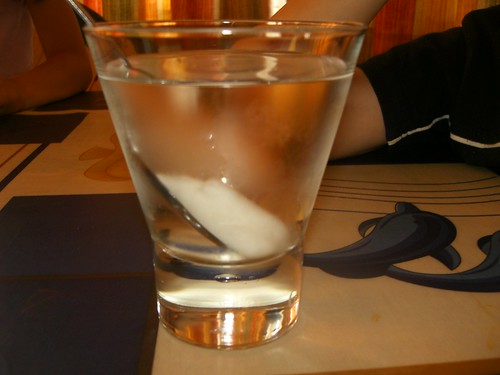

If I were a foreign tourist in Greece, I'd want to believe I got a taste of Greece wherever I went, and not just some globally inspired tourist food. You just need to know the correct way of asking for what you want.
*** *** ***
*Wikipedia states: "In Greece, the term Gazoza is used to refer to clear lemon-lime soft drinks such as 7-Up or Sprite. This term, however, has become outdated. Today, in everyday speech, soft drinks are referred to as 'anapsyktika' (αναψυκτικά), which means 'refreshers'." I need to add this to my next round of myths and legends revolving around Greek cuisine: 'gazoza' is still used in many places (Crete, for sure); if you simply ask for an 'anapsiktiko', you will be asked to state which flavour you want, but if you say 'gazoza', you will be given a clear soda-like drink.
©All Rights Reserved/Organically cooked. No part of this blog may be reproduced and/or copied by any means without prior consent from Maria Verivaki.
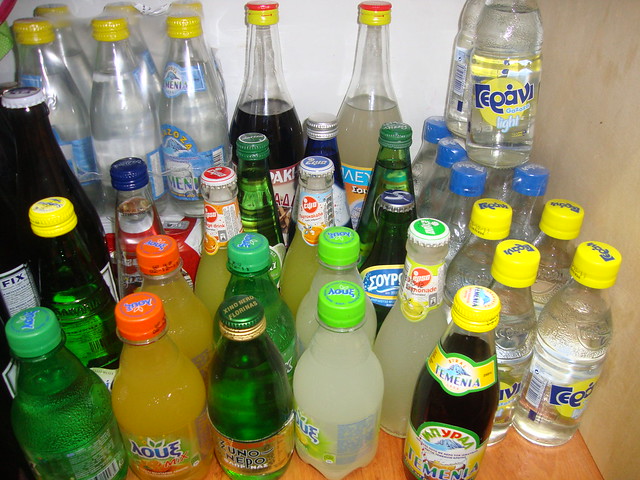


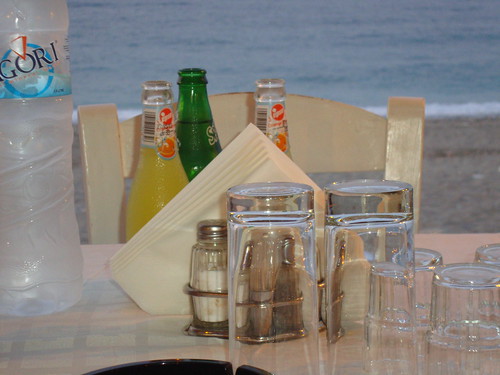


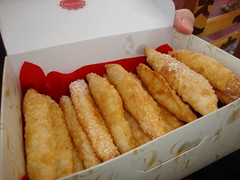
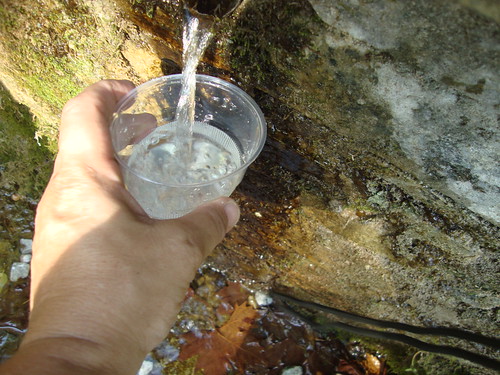


Gazoza implies a clear soda-like drink all over Greece, not only in Crete. It's just considered an old-fashoined word so the youngsters rarely use it.
ReplyDeleteI love ΕΨΑ and Γεράνι and I just remembered I have some vanilia to make ipovrixio!!
Another great post Maria!
Gazoza is actually a pear flavour.
ReplyDeletethis cant be true for all gazoza - if you try the gazoza made by LOUX, it is a lime (not lemon) flavour
ReplyDeleteI always thought gagoza meant "with gas"!!
ReplyDeleteGreat post Maria, I feel the same about soft drinks at home, we rarely have them and treat ourselves when we're out.
ReplyDeleteThanks for this very interesting post. You really are educating us! Now, I just have to hope to visit Crete and Greece someday!
ReplyDeleteThanks for this post. It was really informative. I credited you in my post on Cretan drinks on my little blog.
ReplyDeletehttp://cretantrip.blogspot.com/2015/09/tsikoudia-hania-and-more.html